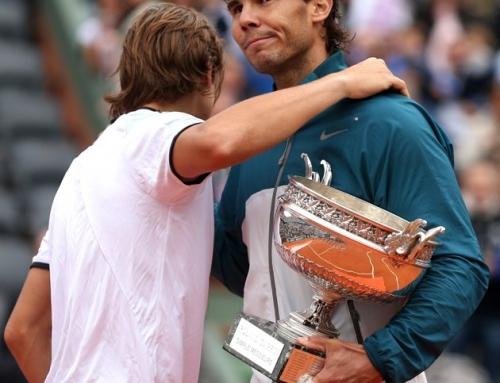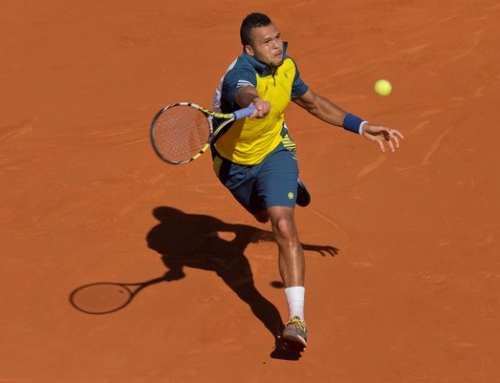
Soderling started off pretty well, got an early break, and had the look of a confident man who was going to make his second finals easily, or at least, without much fuss. But, much like his match against Federer where Federer started off with easy control, but then started to miss a fair bit in the second serve, Soderling’s confidence slipped a notch.
Soderling likes to play short points. A rally lasting more than 10 shots is usually too long for him. It’s not that Soderling can’t hit long rallies, but that he prefers not to. Meanwhile, Tomas Berdych was playing easy-going tennis. If Soderling was feeling a lot of pressure to beat someone that his seeding said he should beat, Berdych sometimes gets the opposite. He doesn’t seem serious enough. It’s not that he jokes around, but he seems lackadaisical. He pouts a little when a shot doesn’t go his way, but then he seems relaxed hitting the big serves.
Sometimes fans complain that aces are the bane of tennis. Although aces typically make less than 15% of the points, aces hit at break points time and time again seem a bit unfair. Berdych hit just 3 more aces than Soderling, but it seemed like a lot more because of when he hit them. Indeed, with the 39 aces hit between the two, it seemed more like grass court than clay court.
By the fourth set, Soderling was starting to play better tennis. In particular, he won 80% of his first serves and 70% of his second serves and fended off two break points. In the second set, a set Soderling lost, he was only at 40% points won on second serve.
It looked like the fifth set might go to Soderling when he broke at love, but then he was immediate broken. Then, at 3-all, Berdych was starting to get fatigued. He got no first serves in, and got broken. At 4-3, however, it looked like Soderling might give back the break, by going down 0-30, but he eventually pulled out the game to go 5-3.
In Berdych’s last game, he again barely got any first serves in, and gave Soderling numerous chances to return serve, something he struggled mightily in the second and third sets. On match point, Soderling decided to just keep a rally in play, and put the pressure on Berdych to win the point. Berdych hit an awkward crosscourt backhand, followed by another that clipped the tape, and finally decided to go inside out on his backhand and hit the ball wide.
Although Berdych played pretty well, it was really Soderling that was dictating the match. When Soderling was playing well, Berdych struggled. When Soderling was not playing well, Berdych did well. In the end, Berdych seemed to fatigue and could not use his big first serve to bail him out.
This puts Soderling in the final in a potential flip of last year, where he upset Nadal in the fourth round and faced Federer in the final. This year, he beat Roger Federer in the quarterfinals, and potentially faces Nadal in the final (who expects anything else? If Melzer makes the final, this upset will be even bigger than Soderling’s upset).
The only downside of the semifinals is that neither player looked good enough to beat Nadal. Soderling eventually took advantage of Berdych’s movement and kept playing shots behind him with Berdych unable to change direction and deal with those shots. The good news for Soderling is that Nadal’s serve isn’t nearly as hard, though it spins the other way. And he can hope that he plays more like he played against Federer, rather than how he played today.
Final score: 6-3, 3-6, 5-7, 6-3, 6-3




![[French Open] The tactics of the Djokovic-Nadal semifinals](https://www.essentialtennis.com/wp-content/uploads/2013/06/20130607nole-500x383.jpg)
![[French Open, SF] David Ferrer defeats Tsonga in straight sets to reach first Slam final](https://www.essentialtennis.com/wp-content/uploads/2013/06/20130607ferrer-500x383.jpg)
![[French Open, SF] Nadal escapes epic 5-setter with win over Djokovic, to compete for 8th title](https://www.essentialtennis.com/wp-content/uploads/2013/06/20130607rafa-500x383.jpg)
